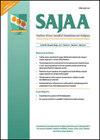Global airway management of the unstable cervical spine survey (GAUSS)
IF 0.3
Q4 ANESTHESIOLOGY
Southern African Journal of Anaesthesia and Analgesia
Pub Date : 2021-11-01
DOI:10.36303/sajaa.2021.27.6.2657
引用次数: 2
Abstract
Unstable cervical fractures pose a twofold challenge: patients may present with a difficult airway and the airway intervention itself could cause or exacerbate spinal cord injury. Reasons for a difficult airway may include limited mouth opening as well as limited movement due to spinal motion restriction techniques employed. Patients can be hypotensive, hypovolaemic, hypoxic, or present with a threatened airway due to spinal cord or associated injuries.5 Maxillofacial injuries and/or intraoral bleeding may further complicate management while the mean blood pressure should be maintained at 90 mmHg, or above.6 The clinician is tasked with multiple problems that require simultaneous management, so that these patients can often be challenging for the anaesthetist.不稳定颈椎调查(GAUSS)的整体气道管理
不稳定的颈椎骨折带来了双重挑战:患者可能出现气道困难,气道干预本身可能导致或加剧脊髓损伤。气道困难的原因可能包括有限的开口以及由于所采用的脊椎运动限制技术而导致的有限的运动。由于脊髓或相关损伤,患者可能出现低血压、低血容量、缺氧或气道受到威胁。5颌面部损伤和/或口内出血可能会使治疗进一步复杂化,而平均血压应保持在90mmHg或以上。6临床医生的任务是处理多个问题,需要同时进行治疗,使得这些患者对于麻醉师来说常常是具有挑战性的。
本文章由计算机程序翻译,如有差异,请以英文原文为准。
求助全文
约1分钟内获得全文
求助全文
来源期刊

Southern African Journal of Anaesthesia and Analgesia
ANESTHESIOLOGY-
CiteScore
0.90
自引率
0.00%
发文量
10
 求助内容:
求助内容: 应助结果提醒方式:
应助结果提醒方式:


